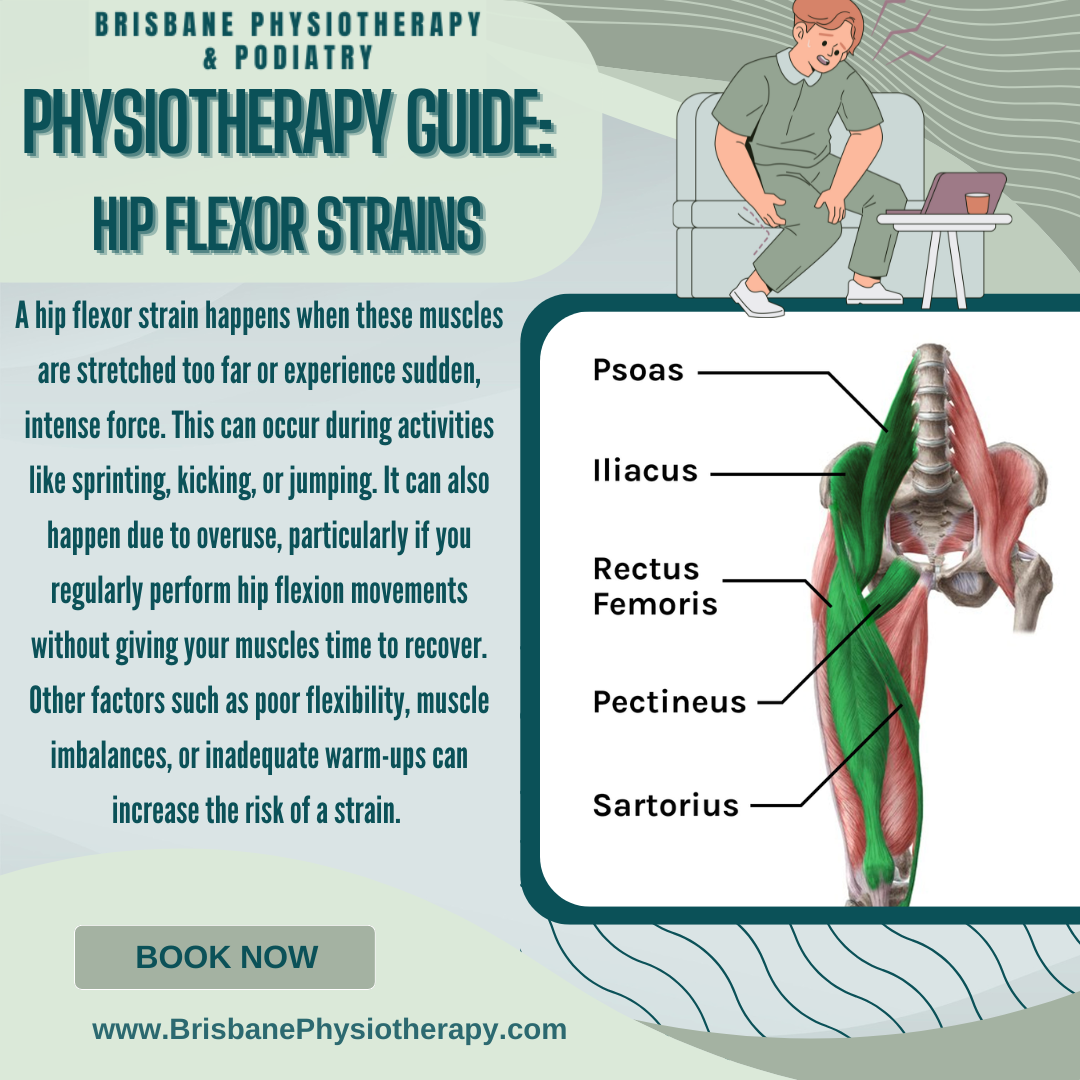A Physiotherapist’s Guide to Hip Flexor Muscle Strains
Hip flexor muscle strains are a common injury that can affect anyone, whether you’re an athlete or someone who leads a more sedentary lifestyle. Understanding what causes this injury, how to recognise it, and how to treat it will help you recover faster and prevent future strains.
What Are the Hip Flexors?
The hip flexors are a group of muscles at the front of your hip that allow you to bend and lift your leg. The main muscles in this group are the iliopsoas (which includes the psoas major and iliacus), the rectus femoris, and the sartorius. These muscles play a key role in movements like running, climbing stairs, or bending down.
What Causes a Hip Flexor Strain?
A hip flexor strain happens when these muscles are stretched too far or experience sudden, intense force. This can occur during activities like sprinting, kicking, or jumping. It can also happen due to overuse, particularly if you regularly perform hip flexion movements without giving your muscles time to recover. Other factors such as poor flexibility, muscle imbalances, or inadequate warm-ups can increase the risk of a strain.
Signs and Symptoms
The most common sign of a hip flexor strain is pain in the front of your hip or groin, especially when you lift your leg or bend at the hip. You may also experience:
Tenderness or swelling in the affected area
Weakness or stiffness in the hip flexor muscles
Difficulty moving the hip or groin without pain
If you experience significant pain or difficulty with daily movements, it may be time to seek professional help.
How to Treat and Recover from a Hip Flexor Strain
The key to recovery is reducing pain and inflammation while gradually restoring movement and strength. Here’s what you can do:
Rest, Ice, and Movement as Tolerated:
Rest the muscle and apply ice during the first few days to reduce swelling.
Begin gentle movement to keep the hip joint mobile and prevent stiffness as the pain allows.
Gradually increase movement as tolerated.
Mobility:
Once the pain decreases, focus on mobility exercises like foam rolling or trigger point release.
These techniques help release tight muscles and improve flexibility in the hip flexors without causing strain.
Strengthening Exercises:
Your physiotherapist will guide you through exercises to strengthen the hip flexors, abdominals, and glutes.
Strengthening these areas helps restore balance and prevents further injury.
Manual Therapy:
Techniques like soft tissue mobilisation can be used to release muscle tightness and improve range of motion.
Gradual Return to Activity:
As you heal, gradually return to your usual activities.
Take things slowly to avoid re-injury.
Preventing Future Strains
Once you’ve recovered, there are steps you can take to prevent another hip flexor strain:
Always warm up properly before any physical activity.
Work on improving your flexibility and strength, especially in the hip area.
Maintain good posture and safe movement habits during activities.
By following your rehabilitation plan and taking care of your muscles, you can return to your normal routine and reduce the risk of future strains. If you experience pain or difficulty during your recovery, always consult your physiotherapist to ensure you’re on the right track.

